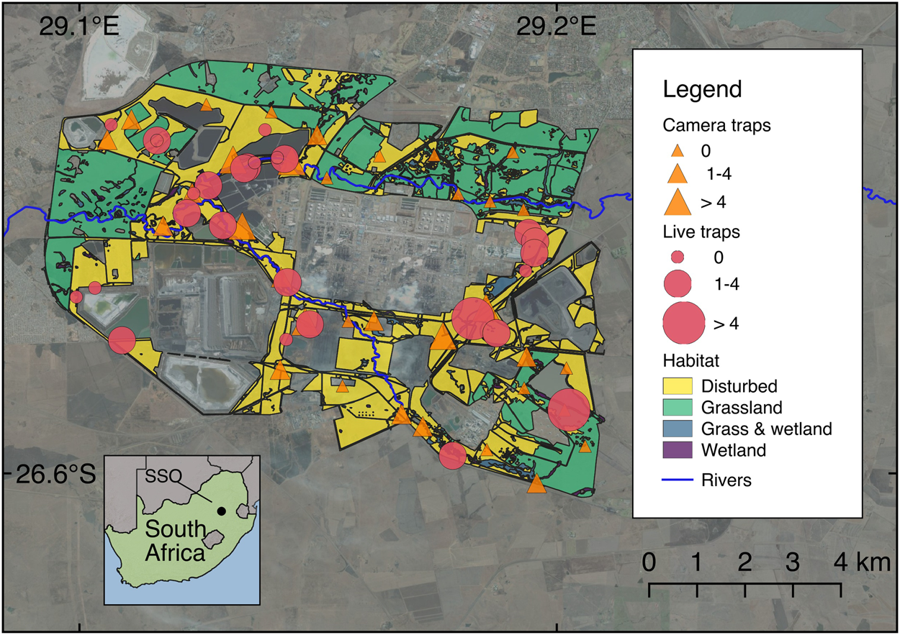
A charismatic carnivore has made itself right at home in the shadow of a large petrochemical plant in South Africa, according to researchers. The heavily industrialised Secunda Synfuels Operations plant, 140 km east of Johannesburg, has been found to contain a strong population of servals (Leptailurus serval) – a medium-sized carnivore that feeds primarily on rodents and is dependent on wetland habitats.
Researchers Samual Williams and Lourens Swanepoel, from the University of Venda, and Daan Loock from the University of the Free State, spent four years documenting these elusive predators. Their findings were published in a report in the international journal Nature.
“As the environment becomes increasingly altered by human development, the importance of understanding the ways in which wildlife interact with modified landscapes is becoming clear,” the researchers said. “Areas such as industrial sites are sometimes presumed to have little conservation value, but many of these sites have areas of less disturbed habitats around their core infrastructure, which could provide ideal conditions to support some species, such as mesocarnivores.”
Over several years the researchers placed camera traps and live traps (which allowed them to identify a serval’s sex and age) throughout the plant to determine the population. They found that the densities of serval were consistently far higher than had previously been recorded elsewhere, which is presumably due to favourable conditions such as a high abundance of rodent prey and the absence of persecution or competitor species. The results of the population density showed that the population structure appeared to be stable and normal, suggesting that the high density was not a temporary situation, but a long-term trend.

“Carnivore species able to adapt to urban environments often succeed in these areas due to high food availability, favourable climatic effects, and the reduced threat of intraguild predation because of the absence of larger apex predators,” the study reported.
In conclusion the researchers stated that although servals appear to thrive in close proximity to such a heavily industrialised site, they suggest that further research is conducted to identify any potential effects of industrial activity, such as the influence of noise and air pollution on the physiology and behaviour of wildlife in the vicinity.
“The cases of modified environments benefiting wildlife should not be taken as evidence that industrialisation is generally a good thing for wildlife,” they said. “As humans modify natural habitats biodiversity tends to suffer, and it is of paramount importance that we curb our impact on the environment. But our findings suggest that even heavily industrialised sites can still have conservation value. We should not overlook these areas when developing conservation plans as they can still play a role in protecting threatened species.”
Full report: Daan Loock, Samual Williams, Kevin Emslie, Wayne Matthews & Lourens Swanepoel (2018). High carnivore population density highlights the conservation value of industrialised sites. Nature. https://www.nature.com/articles/s41598-018-34936-0
To comment on this story: Login (or sign up) to our app here - it's a troll-free safe place 🙂.![]()








